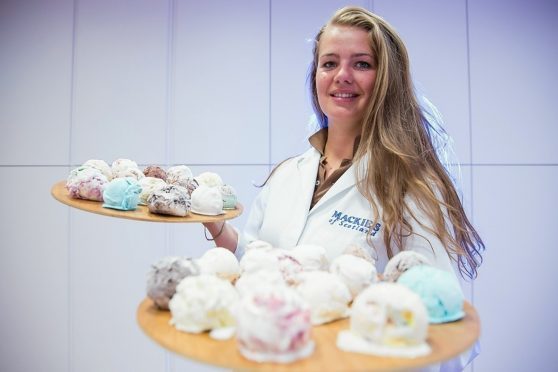Mackie’s of Scotland is the largest seller of “premium” ice cream in Scotland – beating out multinational-owned rivals Ben & Jerry’s and Wall’s Carte D’or.
The Aberdeenshire firm said its ice cream is the best-selling premium brand north of the border with 32% of the volume of branded premium ice cream market share.
Both Ben & Jerry’s and Wall’s are produced by Anglo-Dutch consumer goods giant Unilever – which revealed it had “amicably agreed” to walk away from a £115billion mega-merger with US rival Kraft Heinz on Sunday.
In contrast to the global markets targeted by Unilever, family-owned Mackies produces over 11 million litres of ice cream each year, made with fresh milk from its own dairy herd.
Market data company Kantarworldpanel has revealed that the premium ice cream market in Scotland is growing ahead of the rest of the UK at 2.1% total market share – with enough high-end produce sold to fill an Olympic swimming pool more than four times over.
And while the company has developed a range of new flavours, including Scottish tablet, vanilla remains by far the most popular, with sales more than double the next flavour. Mackie’s original ice cream, “traditional”, with no added flavour, remains the firm’s top seller accounting for 68% of Mackie’s Scottish sales.
Stuart Common, commercial director at Mackie’s, said the impact of Scots-Italians has been crucial to developing the country’s taste for fine ice cream.
He said: “Scotland has a long and proud history of producing quality ice cream – with many Italians bringing their recipes with them as far back as the 19th Century – so it is great to witness the growing and continuing popularity of the treat of real ice cream.”
Mr Common, who has been short-listed by the Institute of Directors (IoD) in the Aberdeen and Grampian category of its annual awards scheme, also believes there is now a greater awareness of ingredients and provenance, with individuals more likely to scrutinise labels.
He said: “People simply care about what is in their food and there is certainly an increased awareness out there about ingredients.
“For that reason we don’t expect this switch towards upmarket ice cream to change or slow down: Scots will increasingly opt for premium as an affordable luxury.
“As a treat it simply makes sense to go for quality – and that is exactly what the growing number of Scottish ice cream aficionados are doing.”
As producers of one of the UK’s most popular take-home ice creams, Mackie’s also diversified into making crisps in 2009, and chocolate bars on its Aberdeenshire farm in 2014.
Having recently added a dedicated £600,000 chocolate factory to its Aberdeenshire home farm, Mackie’s has achieved substantial new contracts for its chocolate, including initial deals with Tesco and Sainsbury’s, with new domestic contracts including the Co-op coming on board in 2016.










